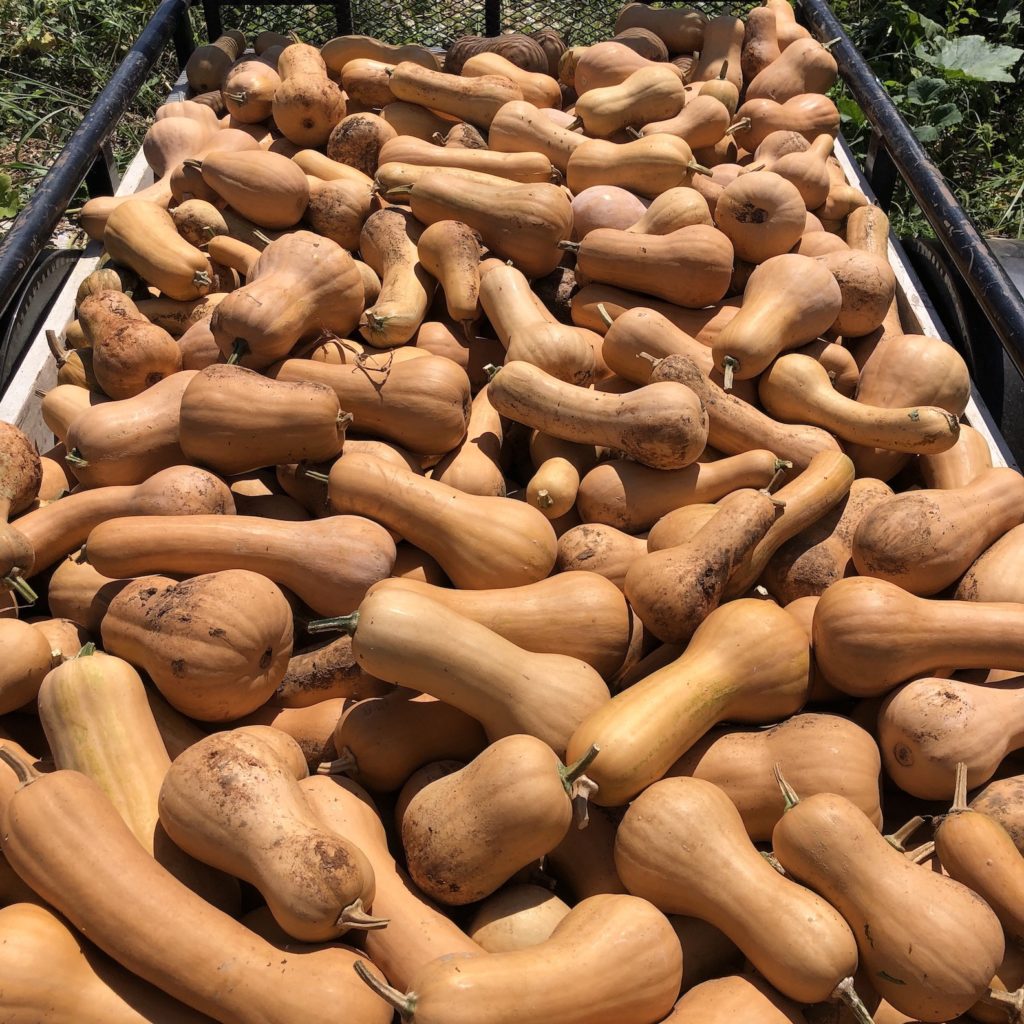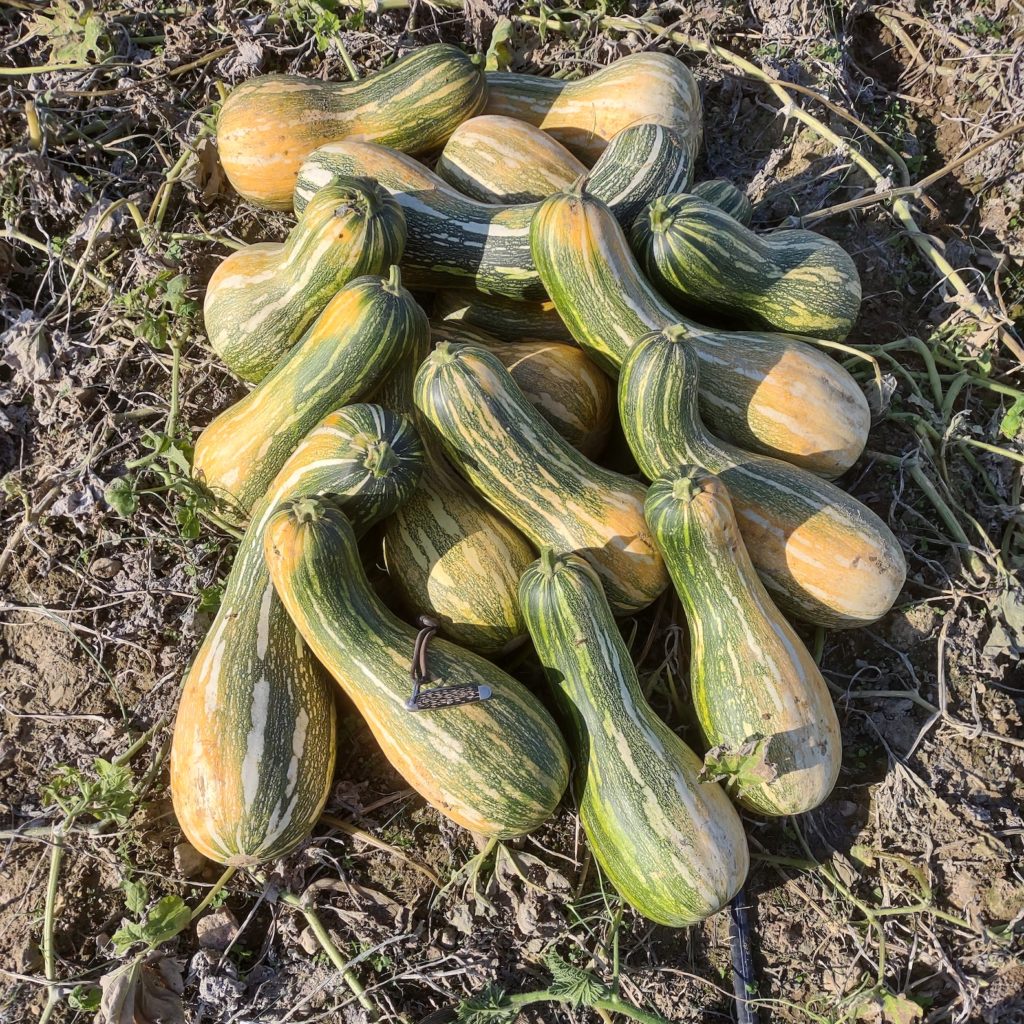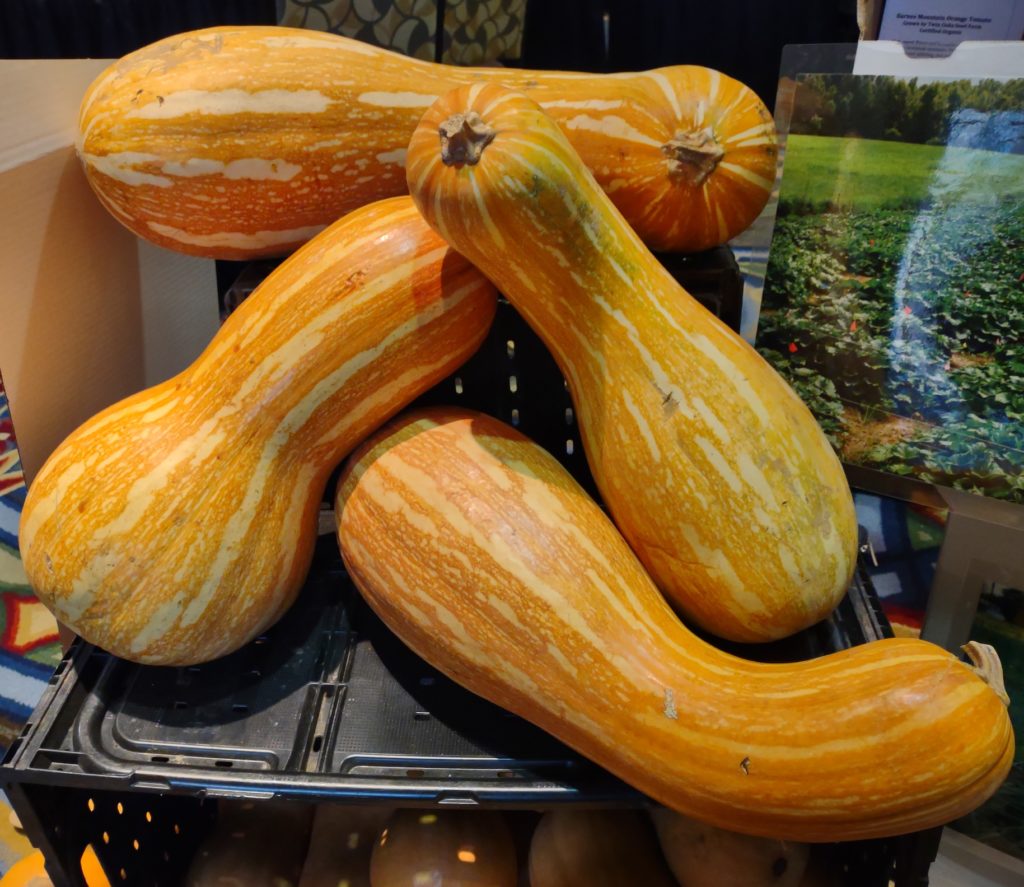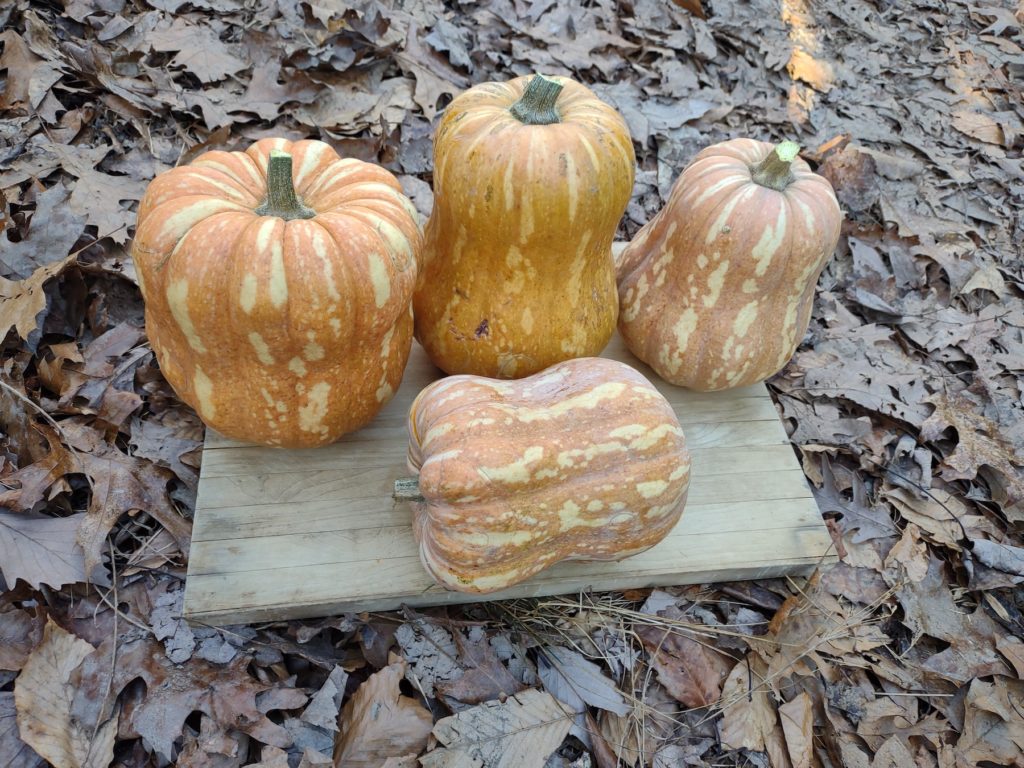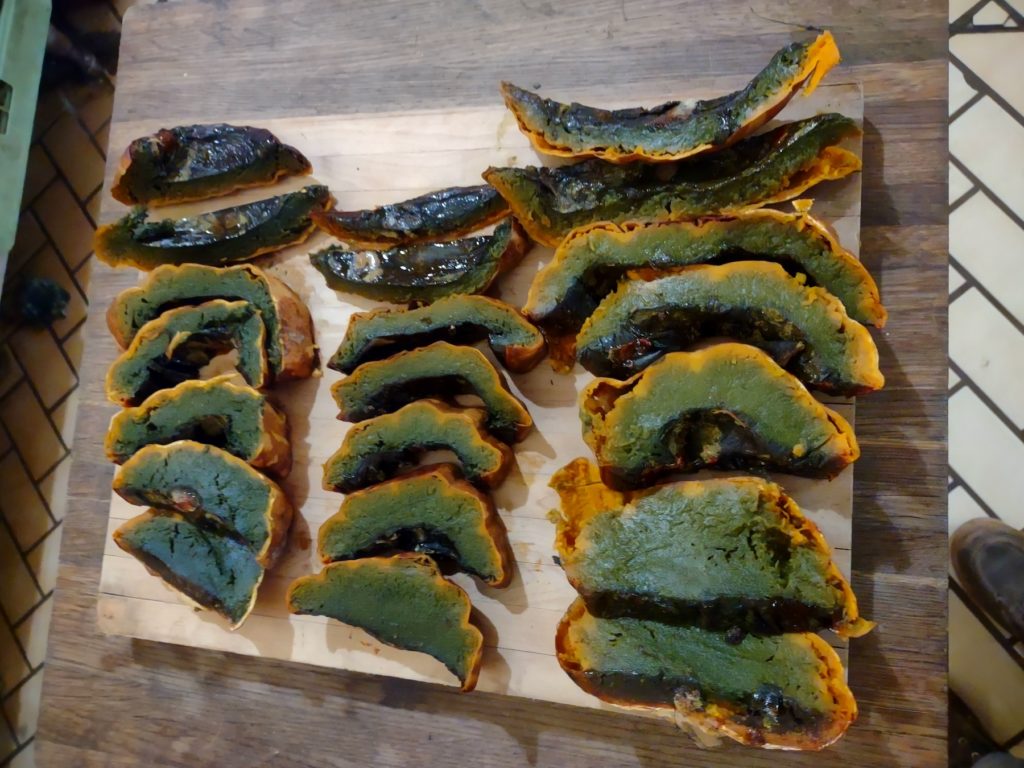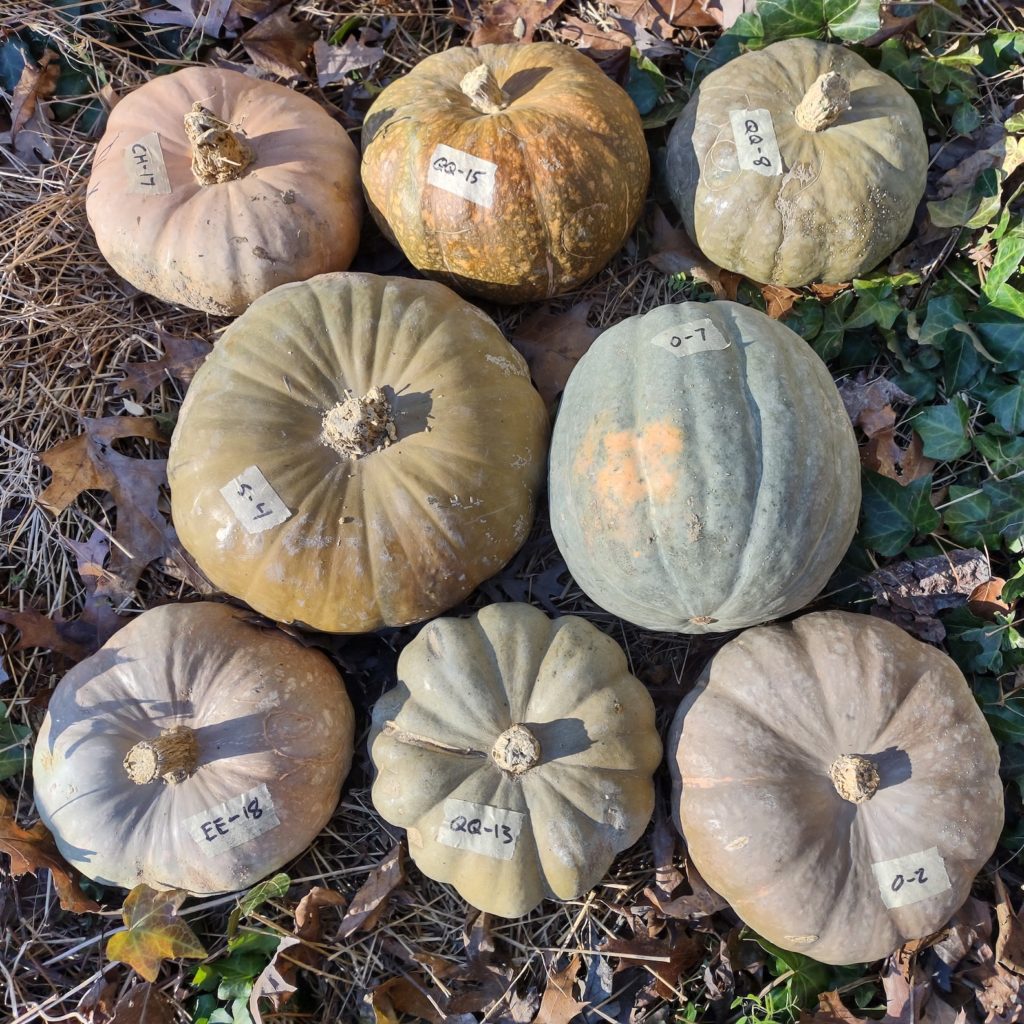At both Care of the Earth Farm and Twin Oaks Seed Farm we do a lot of winter squash breeding and research work. Heres all the updates – note that sections which aren’t in our 2023 winter newsletter are in bold type.
Winter squash at Care of the Earth Community Farm
In the summer of 2022 at Care of the Earth Farm, Megan began selection work on Ofelia, an F5 cross of two plants from the F4 Xiye Butternut gene pool with smaller fruits and more compact vines. Plants in 2022 were uniformly compact and produced an average of four 2# squash/plant. Ofelia stores very well with classic butternut flavor and texture. In 2023, Megan will continue selection work on Ofelia with hopes to offer seed in 2024.
Megan also continued selection work on Xiye Butternut, making self-pollinations with the goal of fuller uniformity of shape next year. Hand-pollinations were also made on the healthiest, most productive plants for further selection and trials for the 2023 season. Megan was really pleased with Xiye storage this winter. Squash stored into February. Xiye has good Brix (10-12) and wonderful flavor. Most are nutty, and when roasted, have more caramelized flavor. They are great on their own, can easily be made into soup with very few other ingredients, or can be added to curries, pastas, and stews.
Megan and Lalo also made a selection from the F5 Xiye gene pool, a small round pumpkin that has continually been present in Xiye plantings, that they will begin working with in 2023.
Winter Squash at Twin Oaks Seed Farm
In 2022 Edmund, Kristina and Sabrina (the Twin Oaks Seeds crew) trialed over 30 winter squash seedstocks in five-plant plots. The idea was to get a good comparison of selections from previous years before deciding which to move forward with. They also did some single-plant evaluations.
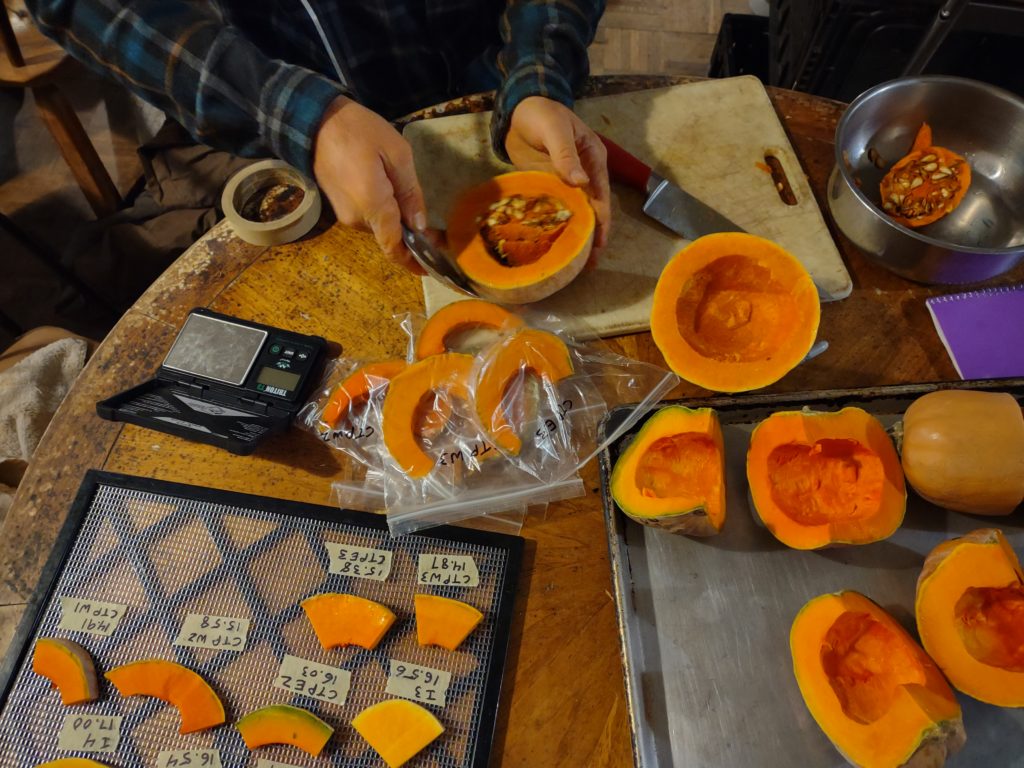
Edmund’s current butternut breeding goals include improved keeping quality and yields, as well as some different flavor, texture and fruit size profiles. A population that is 75% South Anna Butternut and 25% Chinese Tropical Pumpkin looked especially promising in the trial – Edmund is hoping to have at least a prototype to release next year, followed by small and large versions. He expects this to be a workhouse that matches South Anna for flavor and downy mildew resistance, but surpasses it in terms of keeping quality and yields.
Edmund has also been looking at some still-diverse populations that combine South Anna and Guatemalan Ayote. One plant that produced a prolific number of smaller round fruits stood out for eating quality (very sweet, with caramel flavor) and great keeping quality (no loss as of late January). The seeds also have thin hulls, making them good to roast and eat.
A selection from Cuban Neck Pumpkin Edmund made in 2019 was the highest producing squash in the Twin Oaks Seed Farm trial, with yields of over one pound per square foot! This is not so much of a dessert squash as our butternuts, but its still sweet with pleasant aromatic flavor. They are great cubed and roasted, or to sweeten and add flavor to spaghetti sauce. It has a very handsome striped orange skin. We’ll be doing a seed growout using this selection next year. Note that fruits from the seeds we’re currently offering have a broader range of color, and include some white and tan fruits. The fruits are large, averaging 10 pounds. There is also a smaller selection we’ll be looking at more closely.
We are putting renewed effort into Chinese Tropical Pumpkin – doing hand pollinations to bypass plants whose fruits don’t have the predominant flattened ribbed pumpkin shape, and then double checking the fruits for eating quality and seed cavity size. The next seed production (probably this year) will reflect these improvements. Chinese Tropical Pumpkin had an impressive combination of yield and dessert squash eating quality in the 2022 trial, pointing to the relevance of the improvement efforts.
The Guatemalan Green Ayote we sell is in actuality a breeding project that includes Chinese Tropical Pumpkin as well as the pure dark green Guatemalan squash, which on its own is very late and low yielding in our climate. Edmund self pollinated a number of plants in 2020, and the population he’s working with now is a cross between a pure green one and a fairly green one that was much higher yielding. Next year the population will have an increased amount of segregation and we’ll intensify the selection efforts. This squash has very high dry matter and sugar content.
Edmund is also working on a vine borer resistant Cucurbita maxima species kabocha squash. Normally maxima squashes are harder to grow in our region because of vine borers, bacterial wilt and other problems. This breeding project comes from a cross between Moranga Coroa, a resilient and vine borer resistant maxima squash from Brazil; and Winter Sweet, a desert-quality kabocha bred by Johnnys Seeds. In the 2022 growout about half of the plants had no vine borer damage, and about a third of them yielded excellent dessert-quality kabocha squash. They are excellent keepers, and the flavor is just pretty different from the butternuts and other squashes we normally work with. Edmund saved seeds from the best plants – we are interested in getting feedback on these so please contact us if you are interested in trialing them!
Butternut 200, an experimental seedstock with standout flavor that we sold in 2022, didn’t do well in the 2022 trials in terms of yields and keeping quality. We’re not selling it this year, but if you loved it in 2022 we do still have seeds we can share.
